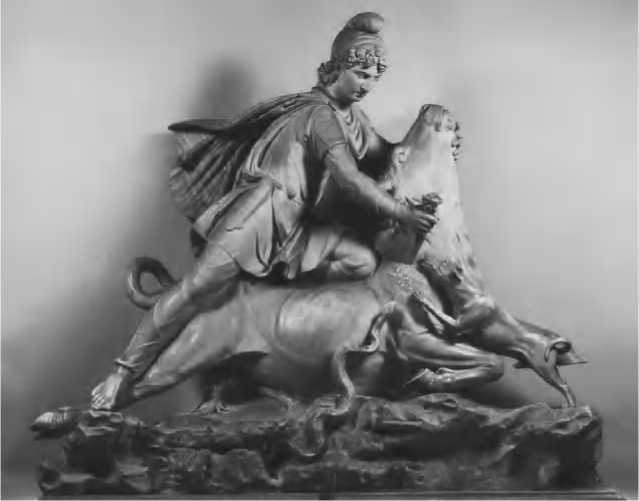According to earliest Zoroastrian legends, Mithras was born from the earth, emerging from a broken rock with a torch in one hand and a sword in the other. He worked for Ahura Mazda by battling demons, sorcerers, and other evildoers. He also judged the deeds of the dead and it was believed he could bring worthy humans back to life at the time of the end of the world.
Hundreds of years later, in ancient Greece and Rome, the worship of Mithras focused on his role as god of war, so soldiers in particular were
The Greco-Roman god Mithras evolved from the Persian god Mithra. Mithras is almost always portrayed in the act of killing the great bull, the body and blood of which became the source of life on earth, according to Greek and Roman mythology. SCALA/ART RESOURCE, NY.

Drawn to the Mithras cult. The legend most associated with this phase of Mithras worship tells of Mithras slaying a great bull whose body and blood became the source of all life on earth. Animal sacrifices were central to his worship, which took place in caves or cavelike buildings in honor of the god’s birth from the earth. Little concrete information about the Greek and Roman form of Mithras-worship survives. Most descriptions of how the religion was practiced in Greece and Rome come from later Christian writers and date to the third and fourth centuries CE, when Mithras-worship was at its peak. It seems most likely that it was an all-male cult with various levels, or ranks, and that rising through the ranks of the cult required special training and initiation. The Roman army carried the religion to Britain, Germany, and other outposts of the Holy Roman Empire.




 World History
World History









